By Jordan Bimm
The Martian Biology program happens in June, at the end of each MDRS season. This means we often contend with the hazard of heat. The planet Mars is cold, but MDRS can get very hot. As seasoned field researchers, we are used to working outdoors when the mercury hits 100 degrees F (38 degrees C). And today was one of those days. Over the years we have developed a few methods to beat the heat while still completing our science goals.
The first is to start early. Very early. This morning our alarms rang out at 4:45 am–over an hour before sunrise. With just a faint purple glow surrounding the science dome, we drank coffee, packed our backpacks, and piled into the Crew Car departing MDRS at 6 am sharp. Our destination? A new field site we had not surveyed before: Temple Mountain Wash, located an hour’s drive north. We arrived on site, ready to work, at 7:15 am. By then the sun was up and already feeling very warm on our skin. In the field, we dress strategically to stay cool. This includes wearing wide brimmed hats, bandanas, loose, long sleeved desert gear, light colors that reflect sunlight, sunglasses, and of course, plenty of water and sunscreen. Still, the early hour meant the heat was tolerable, especially in the small partly shaded canyons we surveyed for vegetation, insects, and animals.
One type of vegetation we’ve long been interested in is lichen. Lichens are everywhere and yet most people don’t know about these complex and fascinating life forms. A surprising fact about lichens is that they are actually a symbiotic partnership between fungi and algae. Fungi provides the structure and algae performs photosynthesis, converting the sun’s rays into energy to sustain the dynamic duo. Another little known fact connects lichens and the planet Mars. In the first half of the twentieth century most astronomers and astrobiologists believed life existed on Mars, but that it took the form of vegetation similar to lichens. This was because lichens are known to survive in low-pressure, low temperature, and low-moisture environments, all aspects of Mars they saw as hurdles for more complex life. Over the past four years we’ve surveyed many sites around MDRS to compile an inventory of the different species of lichen present.
In the early morning light at Temple Mountain Wash we noticed the dominance of a single type of dull blueish-grey lichen called Acarospora strigata. This type is common around the MDRS Hab, and all across southeastern Utah. So much so that some field biologists jokingly call it “Blutah.” But it is often joined by other types of more colorful lichens presenting fiery oranges and vibrant greens. After wrapping up activity at our first stop we continued further down the Temple Mountain Wash road pulling over periodically to investigate sites that appeared promising. It was at our second stop that Olivia Drayson, a PhD candidate at UC Irvine discovered a lone collection of diverse lichens on a single rock outcrop.
This collage of colorful lichens was a welcome break from the barrage of Blutah we had been noticing so far. Paul Solokoff, an expert in lichens, quickly identified two of the other types present here. The bright orange lichen was Xanthomendoza trachyphylla, also known as desert firedot lichen, and the green lichen was Acarospora stapfiana, also known as parasitic cobblestone lichen for piggybacking on other lichens.
I asked Sokoloff what was behind the dominance of Blutah lichen we had seen all morning at Temple Mountain Wash. He explained that Blutah is known for being especially hardy. “Bluetah is capable of spreading in harsh microenvironments with ease,” he noted, indicating that this gives it a competitive edge over other species when conditions are sub-optimal. At this site he noticed that much of the rock was hard shale, making it a more difficult substrate for lichens to manage.
Next, I wanted to know what might explain this highly localized exception to the uniformity Drayson had discovered. What was it about this place or this rock outcrop that meant other types of lichens also had a chance? Here he noted both the softer type of rock which made for a more favorable platform, as well as the outcrop’s prominence, making it an attractive perch for passing birds that provide extra nutrients for lichens in the form of excrement.
Starting early meant that we returned to MDRS by Noon, avoiding the ever increasing heat-of-day. In the Hab we retrieved some more improvised cool-down tools, water bottles strategically stowed in the fridge to be ice cold upon return, as well as another heat hack. Wet wipes placed in the freezer provide a refreshing and cooling sensation as they remove desert dirt and dust.
Finally, on these hottest of hot days, we take refuge in the MDRS Science Dome, the only part of the analog complex that has air conditioning. Here we set to work processing our samples from the field, writing up notes and findings, and keeping the heat in check. In this way, it is interesting to consider the possibility that MDRS can function not only as a Mars analog but also as an analog of a future Earth, one that is warmer and dryer than it is today. The strategies we use here in the field may become more commonplace as our climate changes and humans worldwide contend with rising temperatures.


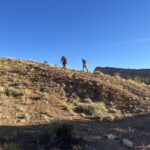



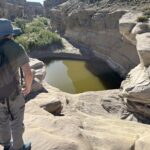
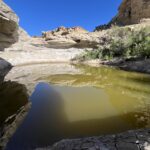
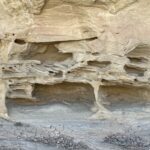

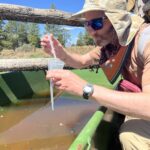

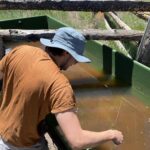
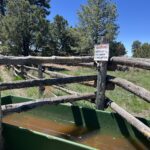

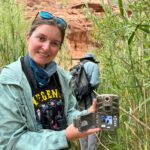
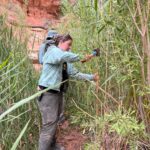

You must be logged in to post a comment.